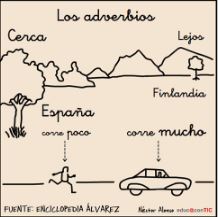Dictionary
Earthquake

- Definition:
-
Sudden and violent shaking of the earth's crust.
-
Movimiento repentino y violento de la corteza terrestre.
- Example:
-
Luckily, water supply was not affected by the earthquake.
-
Por suerte, el abastecimiento de agua no fue afectado por el terremoto.
- Spanish word:
-
Terremoto
- Audio:
Headteacher

- Definition:
-
Person in charge of a school.
-
Persona responsable de un centro educativo.
- Example:
-
The headteacher told off Judy and Pam after their loud discussion.
-
La directora regañó a Judy y Pam por discutir en voz alta.
- Spanish word:
-
Director o directora de centro escolar.
- Audio:
Panellist

- Definition:
-
Person who gives her/his opinion of news in the media.
-
Persona que da su opinión sobre las noticias en los medios de comunicación.
- Example:
-
My grandfather loves to discuss with radio panellists while he has breakfast.
-
A mi abuelo le encanta discutir con los tertulianos de la radio mientras desayuna.
- Spanish word:
-
Tertuliano o tertuliana.
- Audio:
Shorten

- Definition:
-
To make something shorter.
-
Hacer algo más corto.
- Example:
-
Shorten your speech or you will bore the audience.
-
Corta tu discurso o aburrirás al púbico.
- Spanish word:
-
Acortar
- Audio:
Statement

- Definition:
-
A declaration or observation about something.
-
Una declaración u observación sobre algo.
- Example:
-
The prime minister's statement suprised everybody.
-
La declaración de la primera ministra sorprendió a todo el mundo.
- Spanish word:
-
Declaración
- Audio:

 News are facts.
News are facts. Different people have different opinions.
Different people have different opinions. You use the verbs “believe”, “like” or “”think”.
You use the verbs “believe”, “like” or “”think”. You use expressions such as:
You use expressions such as: You use adverbs such as:
You use adverbs such as: You express your opinion.
You express your opinion. There are different roles in the media:
There are different roles in the media: